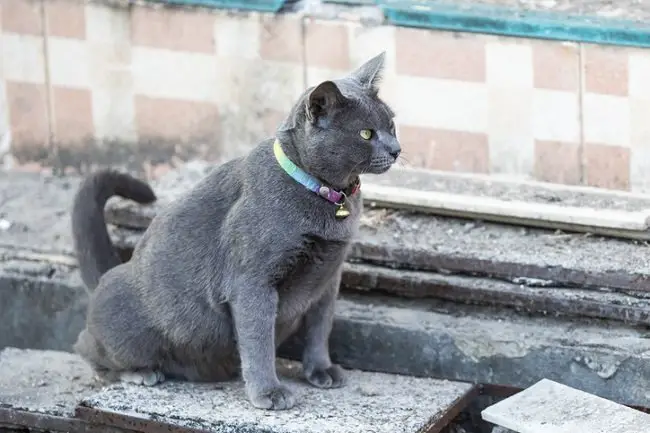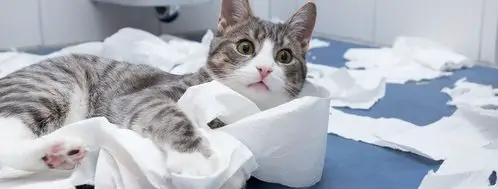Getting rid of cat pee and its lasting, potent smell can be problematic.
Even the most thorough scrubbing will be ineffective if you are using the wrong method or cleaning product.

Fortunately, there are several relatively easy ways of eliminating the odour once and for all.
Regardless of whether this is a reoccurring issue or a one-off accident, these techniques will help to completely eliminate the smell of cat urine and prevent the problem from reoccurring in the future.
This guide covers the do’s and donts of cleaning cat urine; from using affordable homemade solutions to buying specialised enzymatic solutions from pet shops.

Now you can finally rid your home of that lingering scent of cat urine.
• Use an enzymatic cleaner.
• Use a regular vacuum or wet vac.
• Use an ammonia-based cleaner.
• Use a steam cleaner.
Contents
1. Find the Source of the Cat Pee Smell
If you haven’t seen exactly where your cat has sprayed or urinated then it is likely you’ve narrowed down the source of the smell to a room or particular space within the house.
You may not be able to see where your cat urinated which can make it more difficult to properly clean and remove the smell. If you aren’t sure where the urine is, you can use a black light (or UV light) to locate it.

Cat urine will illuminate under a black light allowing you to see exactly where the stain is, even if it is completely invisible under normal lighting conditions.
Locating the stains ensures that you can thoroughly clean the soiled area and solve the problem more easily.
2. Act Quickly
You will notice that the longer the urine is left, the worse the smell becomes. This is because as the urine breaks down it gives off an ammonia-like smell.
There’s a good chance you may have only realised your cat has urinated inside after the urine has dried and the smell has worsened (unless they peed directly on you!).
If this is the case, don’t worry as we can still get rid of the smell, just skip this step.
If, however, you have spotted your cat urinating somewhere other than their litter box or have noticed a wet patch on the carpet or furniture, it is important to act quickly.

Use a cloth to soak up as much of the urine as possible before it dries.
By quickly removing as much of the urine as possible you will help to make the overall clean-up easier. You will still need to clean the area thoroughly but it’ll be a smaller task than if the urine has dried into the material.
• If the urine is on carpets/ floors: use a paper towel to absorb the majority of the urine
• If the urine is on walls: wipe the area with a wet cloth and disinfectant
• If the urine is on linen and clothing (read our article on why cats pee on clothes if this is a common problem in your household): wash the items immediately with your usual fabric cleaner and a tablespoon of baking soda. If the smell remains after one wash, wash again with one cup of apple cider vinegar then dry clean the items.
3. Clean the Area (Not Just The Pee)
Just soaking up the urine is not enough to remove the smell so the next step is to clean the area using a neutraliser or enzymatic cleaner.

This may sound fancy but before you head out to the shop to buy a special cleaner, check your cupboards as you may have something on hand that will do the trick.
Homemade Solutions
Below are a few of the most effective, affordable homemade solutions that are worth trying:
• Sodium bicarbonate A.K.A Baking Soda: if you have some baking soda in your cupboard, use it! Baking soda is able to effectively remove odours so when the affected area is dry, simply sprinkle the powder and leave for around 30 minutes. After this time, thoroughly vacuum to pick up the urine particles as well as the deodoriser (the baking soda).
• Vinegar and water: A vinegar solution of white vinegar: water (1:1) can be sprayed on the area. Leave it to sit for 5 minutes then use a paper towel to dab the area and soak up the solution. This method works well as the acidity of the vinegar neutralizes the alkaline salts within the dried urine.
• Hydrogen-peroxide: This is good to use on hardwood floors, although it may cause discolouration in carpets so take care if you decide to use it (if you’re unsure do a spot test to check for discolouration). Simply, pour the hydrogen peroxide directly onto the area, leave it for a minimum of 5 minutes then use a paper towel to soak up any remaining moisture.
Enzymatic Cleaner
Many store-bought, non-protein based cleaners and deodorisers are not going to be able to completely eliminate the smell of cat urine which may be why you are struggling to remove the smell from your home even after intensive cleaning.
To solve this problem, use an enzymatic cleaner.
Enzymatic cleaners break down both the smell and the stain to ensure the area is completely clean.

Not only will this make sure the smell has gone but it will also reduce the likelihood that your cat will urinate or spray there again. When you find an enzymatic cleaner you would like to use, be sure to read the instructions as the effectiveness of the cleaner may be weakened if it is used in conjunction with other products.
It is best to avoid household cleaners that contain ammonia as ammonia smells like urine to cats which can actually worsen the smell and inadvertently encourage your cat to urinate in the same area again.
Not only will it make your cat more likely to return to the area but it could also set the stain in making it even harder to remove the stain and the smell.
4. Use a Wet Vac
Using a regular vacuum (especially after sprinkling baking soda) is often effective in removing the urine particles but you can also use a wet vac which will produce even better results.
When using a wet vac, use cold water rather than hot. Wet vacs work by saturating the carpet and then sucking the dirty water back into the vacuum tank meaning you can pick up the urine particles that are deeper in the carpet.
If you are giving your carpets a deep-clean, it is very important not use a steam cleaner as this can actually worsen the problem due to the heat pushing odours deeper into the fibres of the carpet.
For particularly tough stains, simply repeat the preferred cleaning method.
5. Prevent Future Toilet Accidents
Thoroughly cleaning the area with the right products is vital to neutralising the smell and preventing your cat from returning to the same spot to urinate again.
There are many reasons your cat may be urinating in an area that is not their litter box including health issues, marking territory or having too few litter boxes.
To be able to deal with the problem as a whole you need to know why they aren’t making use of the litter box.

While a trip to the vet may be necessary in order to rule out kidney or bladder issues there are also some simple solutions that may help, including;
- Adding more litter boxes around the house
- Clean the current litter box more frequently
- Putting your cat’s food bowls or cat feeder in rooms that they have previously soiled (they don’t tend to eat and pass urine/ faeces in the same room)
- Spay/ neuter your cat (this makes them less likely to feel the need to mark their territory)
- Use home remedies as scent deterrents
Your cat may also need some gentle re-training on how to use their litter tray.
Be patient when training your cat, take them to the litter box whenever they urinate and positively reinforce them whenever they use it.
A cat is a wonderful companion so don’t let stubborn cat urine ruin the relationship, despite what people say your cat is not urinating outside of the litter box to upset you.
Responding quickly and choosing effective cleaning products is paramount in tackling the issue.
Once you’ve removed the stain and smell, take some time to find ways to prevent future accidents so you can wave goodbye to the lingering smell of carpet-deep cat urine once and for all.
As an Amazon Associate I may earn a small fee from qualifying purchases at no extra cost to you. This helps us run the site, so thanks for your support!







Leave a Comment